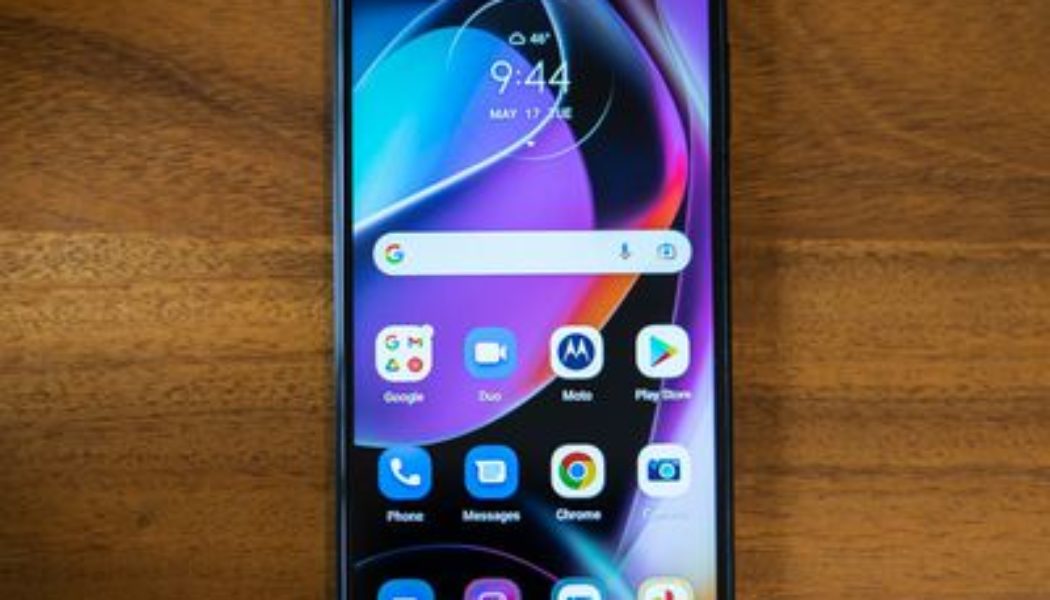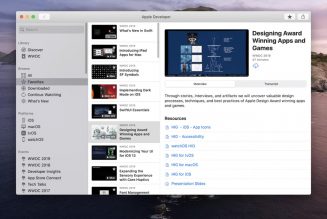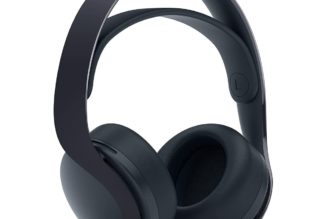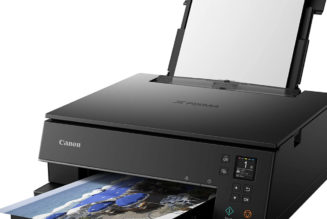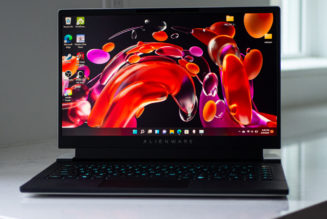The formula for a good $400 phone is a tough one to solve for, and Motorola hasn’t gotten it quite right with the Moto G 5G.
For $300, you’re prepared for some significant tradeoffs — performance might not be top-notch, but hey, you only paid $300. At $500, you’re spending quite a bit more, but you’ll find some worthwhile upgrades and even a few nice-to-haves. But at $400, phones seem to get the worst of both worlds: a no-frills experience with a significantly higher price than that $300 budget phone.
That more or less sums up the 2022 Moto G 5G’s problem. It’s a good performer, particularly the model I tested with 6GB RAM. It has a truly long-lasting battery that I struggled to drain much lower than 50 percent in a day. But I’m not convinced that it’s worth $100 more than the OnePlus Nord N20 or the Samsung Galaxy A32. Likewise, the Samsung Galaxy A53 5G includes features like a 120Hz OLED screen and IP67 weatherproofing that make it well worth the extra $50 over the Moto G 5G.
Let’s start with the good: battery and overall performance. The Moto G 5G uses a MediaTek Dimensity 700 processor and 6GB of RAM — good on paper, and it translates to good real-world performance, too. Apps load quickly and stay open in the background for a reasonable amount of time. Generally, the phone just keeps up well as I jump between tasks and go about my day. This unlocked variant comes with a very healthy 256GB of storage, and you can add even more thanks to a microSD card slot.
The Moto G 5G’s 5,000mAh battery is about as big as they come and lives up to Motorola’s claim that it will last up to two days on a single charge. After a day of moderate use including four hours of screen-on time with some video streaming, a Zoom call, and lots of social media scrolling — all with the screen’s highest refresh rate enabled — I’m down to 56 percent. It’s some of the best battery stamina I’ve seen from a phone released this year.
:no_upscale()/cdn.vox-cdn.com/uploads/chorus_asset/file/23540164/ajohnson_220517_5232_0004.jpg)
Motorola’s software deserves an honorable mention here, too. It’s a light-touch treatment of Android 12 that’s genuinely user friendly. It includes some clever features that I look forward to using when I test a Motorola phone, like the sunrise alarm option in the bedtime mode settings and the minimally disruptive peek notifications on the lock screen. The Moto G 5G is promised one OS platform upgrade and three years of security updates. That’s all right for a budget phone, but for a little more money, you can get much better longevity from the iPhone SE or Samsung A53 5G.
There’s 5G support here, too, of course — just sub-6GHz and not the very fast but hard to find mmWave, which isn’t much of a loss anyway. At launch, the unlocked version of the phone will work on T-Mobile and Verizon’s sub-6GHz 5G networks; Motorola spokesperson Stephanie Stiltz tells us that other carriers “will be available in the coming months.”
But nice software, a great battery, and even fast performance aren’t absolutely everything. The Moto G 5G’s screen isn’t particularly inspiring: it features a paltry 720p resolution for its sizable 6.5-inch display. Details just don’t look as nice on this screen as they do on a higher-res display. It’s also an LCD, which doesn’t offer as rich of a viewing experience as an OLED panel, though its 90Hz refresh rate does smooth out motion a bit.
The biggest problem I had with the display was using it to type out messages, something that any of us does roughly a million times a day. It registers a lot of errant double taps when I’m using the default Gboard keyboard, so often that I need to backspace to take out extra letters and unwanted periods multiple times in the course of composing a single text.
I tried turning the haptic typing vibrations off in case that was somehow interfering, but that hasn’t changed anything. Using another keyboard app doesn’t help, either. It’s an incredibly frustrating experience, causing me to type and retype logins and texts and searches many times a day, and it’s not something I’d be able to live with for very long before throwing my phone into the sea out of frustration.
:no_upscale()/cdn.vox-cdn.com/uploads/chorus_asset/file/23540162/ajohnson_220517_5232_0003.jpg)
And then, on a couple of other occasions, the phone simply stopped receiving text messages without any indication that there was a problem. I was at home using Wi-Fi and only noticed because I kept requesting a two-factor authentication code that wasn’t arriving. Switching the wireless network off and on fixed things but not before I’d missed a handful of texts and a slew of authentication codes.
Camera performance is neither a bright spot nor a blemish on the Moto G 5G’s report card. The main rear camera uses a 50-megapixel sensor that combines pixels to produce 12-megapixel images. There’s a 2-megapixel macro camera and a depth sensor on the back, too, neither of which are very useful. On the front, there’s a 16-megapixel camera. The selfie face-smoothing beauty filter is on by default, but you can easily tune down the effect or turn it off completely.
Photos in bright outdoor light are nice, and Motorola doesn’t go overboard on HDR effects. Dim lighting is a challenge, as it is for most budget phones. If your subject is moving and light is low, you’ll be challenged to get a sharp shot. There’s a night mode for very low light situations and video recording at 1080p resolution. It’s a basic imaging feature set and not the best you can get for the money, but it’s not the worst either.
:no_upscale()/cdn.vox-cdn.com/uploads/chorus_asset/file/23540160/ajohnson_220517_5232_0001.jpg)
The Motorola Moto G 5G is in a tough spot. There’s not enough to warrant a recommendation above less expensive budget phones, and paying a bit more will get you a much better phone. Performance is good for the budget class, especially the 6GB / 256GB version that will be sold unlocked. (Certain carriers will sell a version with 4GB of RAM, which I haven’t been able to test.) Battery stamina is excellent, and Motorola’s software is thoughtfully designed.
The quirks I encountered with the phone’s touch sensitivity while typing and a couple of blips in the data connection are concerning. But above that, the Moto G 5G just doesn’t offer a ton of value for its price. The Samsung Galaxy A53 5G includes some very worthwhile extras, like a better screen, waterproofing, and five years of security updates for $450. The Google Pixel 6A will be arriving later this summer, too, which has also promised five years of security updates and will include the same very good camera that the Pixel 5A used. There’s the 2022 iPhone SE, too, if iOS is an option. It offers outstanding performance if you can live with a very small 4.7-inch display.
If you happen to be on T-Mobile or Metro, the OnePlus N20 is an excellent alternative at a lower price. It comes with a nicer OLED screen — albeit with a less smooth 60Hz standard refresh rate — and fast charging with the included charger. The Samsung Galaxy A32 5G is another good $300 option if you can find it. It’s a year old at this point, but, with a more versatile camera system and three more years of security support promised, it’s still a solid alternative.
A lot of people will probably encounter the Moto G 5G as an option from their prepaid wireless carrier — likely the 64GB version with less RAM and a lower price. Is that version worth the money? My answer is a resounding “maybe.” Performance with 4GB of RAM is probably good enough to handle all of your daily tasks well, plus you get that big battery and good Motorola software. The typing experience makes me very hesitant to recommend it, though, even at a lower price, so the best course of action would be to try it out in a store if you can. Otherwise, the safest bet would be to look to one of the very good alternatives from Samsung, Google, or OnePlus.
Photography by Allison Johnson / The Verge
